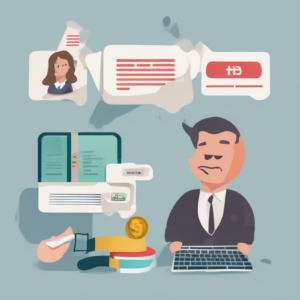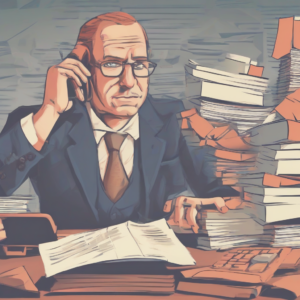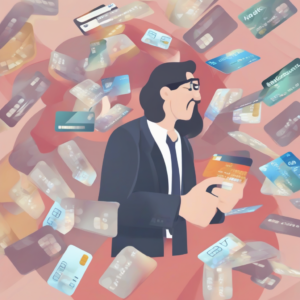Navigating the Maze: Your Comprehensive Guide to Minnesota Debt Relief
Facing overwhelming debt can feel isolating and crippling. In Minnesota, as in other states, many individuals and families struggle under the weight of medical bills, credit card debt, student loans, and other financial obligations. This guide aims to provide a comprehensive overview of the debt relief options available in Minnesota, helping you understand your choices and navigate the often-complex legal landscape.
Understanding Your Debt
Before exploring debt relief options, it’s crucial to understand the nature of your debt. Different types of debt have different implications for relief strategies. This includes:
- Secured Debt: This is debt backed by collateral, such as a mortgage (house) or auto loan (car). Defaulting on secured debt can lead to foreclosure or repossession.
- Unsecured Debt: This is debt not backed by collateral, such as credit card debt, medical bills, and personal loans. While defaulting can damage your credit score, it doesn’t risk losing assets.
- Student Loan Debt: This type of debt has unique characteristics and repayment options, often requiring specialized strategies for relief.
- Tax Debt: Failing to pay taxes can result in serious consequences, including wage garnishment and liens on property. Specialized assistance programs exist for tax debt resolution.
Creating a detailed list of your debts, including creditors, balances, interest rates, and minimum payments, is the first step toward developing an effective debt relief plan.
Debt Relief Options in Minnesota
Minnesota offers various pathways to debt relief, each with its own advantages and disadvantages. Choosing the right option depends on your individual circumstances and financial situation. These options include:
- Debt Management Plans (DMPs): Credit counseling agencies help you create a budget and negotiate lower interest rates and monthly payments with your creditors. DMPs typically involve consolidating your debts into a single monthly payment.
- Debt Consolidation Loans: This involves taking out a new loan to pay off existing debts. If you secure a lower interest rate, you can potentially save money and simplify your payments. However, this requires qualifying for a new loan.
- Balance Transfers: Transferring high-interest credit card balances to a card with a lower interest rate can significantly reduce your interest payments. Be mindful of balance transfer fees and introductory periods.
- Bankruptcy: This is a legal process that can discharge some or all of your debts. It’s a significant decision with long-term consequences for your credit score. In Minnesota, there are two main types of bankruptcy: Chapter 7 (liquidation) and Chapter 13 (reorganization).
- Negotiation with Creditors: You can directly negotiate with your creditors to try and reduce your debt or modify payment terms. This can be done independently or with the help of a debt negotiator.
- Settlement: This involves negotiating a lump-sum payment with your creditors for a reduced amount of your debt. This can be a viable option for those who have a lump sum available or can secure a loan.
- Debt Relief Programs (Non-profit): Several non-profit organizations in Minnesota offer free or low-cost credit counseling and debt management assistance. These organizations can provide valuable guidance and support.
Chapter 7 Bankruptcy in Minnesota
Chapter 7 bankruptcy, also known as liquidation bankruptcy, involves selling non-exempt assets to pay off creditors. In Minnesota, certain assets are protected from liquidation, such as a certain amount of equity in your home and vehicle, and essential personal property. Eligibility for Chapter 7 bankruptcy depends on meeting certain income and asset thresholds established by federal law. The process involves filing a petition with the bankruptcy court, undergoing a credit counseling course, and attending a meeting with creditors.
Chapter 13 Bankruptcy in Minnesota
Chapter 13 bankruptcy, also known as reorganization bankruptcy, is an option for individuals with regular income who want to repay their debts over a three-to-five-year period. Under Chapter 13, a repayment plan is created that outlines how much you’ll pay your creditors over the plan’s duration. This allows you to retain your assets while working toward debt repayment. The plan must be approved by the bankruptcy court. Chapter 13 can be a complex process, often requiring the assistance of a bankruptcy attorney.
Choosing the Right Debt Relief Strategy
Selecting the most appropriate debt relief strategy requires careful consideration of several factors:
- Type of Debt: Secured vs. unsecured debt influences the available options.
- Amount of Debt: The total debt owed plays a crucial role in determining feasibility.
- Income and Expenses: Your financial situation directly impacts your ability to manage debt.
- Credit Score: Your credit score influences eligibility for certain options.
- Long-Term Goals: Consider the long-term impact on your credit and financial health.
It’s often beneficial to seek professional advice from a credit counselor, financial advisor, or bankruptcy attorney. They can assess your situation, explain your options, and guide you toward the best course of action.
Finding Help in Minnesota
Several resources are available in Minnesota to assist individuals struggling with debt:
- Credit Counseling Agencies: These agencies offer free or low-cost credit counseling and debt management services. Look for agencies accredited by the National Foundation for Credit Counseling (NFCC).
- Legal Aid Societies: Legal aid societies provide legal assistance to low-income individuals, including those facing debt issues. They can offer guidance on bankruptcy and debt negotiation.
- Non-profit Organizations: Several non-profit organizations in Minnesota specialize in financial literacy and debt relief. They offer resources, workshops, and support.
- Government Programs: Depending on your circumstances, you may qualify for government assistance programs that can help with debt repayment.
Avoiding Debt Traps
Preventing future debt accumulation is just as crucial as finding relief from existing debt. Here are some strategies to avoid future financial difficulties:
- Create a Budget: Track your income and expenses to gain control of your finances.
- Emergency Fund: Build an emergency fund to cover unexpected expenses and avoid using credit cards for emergencies.
- Responsible Credit Card Use: Only use credit cards if you can pay off the balance in full each month.
- Financial Literacy: Educate yourself on personal finance topics to make informed financial decisions.
Debt relief is a multifaceted process requiring careful planning and often professional guidance. By understanding your options, seeking appropriate assistance, and implementing responsible financial practices, you can navigate the challenges of debt and build a more secure financial future.
Disclaimer
This guide provides general information about debt relief options in Minnesota. It is not intended as legal or financial advice. It’s essential to consult with qualified professionals for personalized advice tailored to your specific circumstances.





